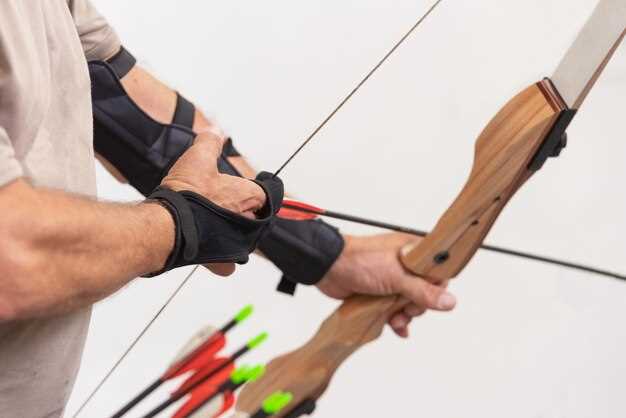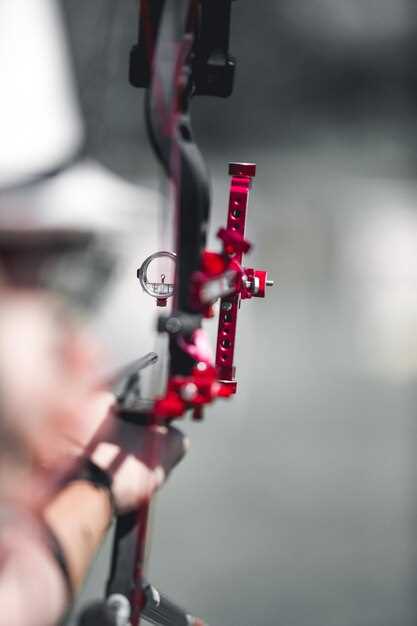
Restringing a compound bow is a crucial aspect of maintenance that every archery enthusiast should master. Over time, string wear and tear can significantly affect the performance and accuracy of your bow. If you want to ensure optimal shooting experience, understanding the process of restringing is essential.
In this guide, we will walk you through the necessary steps to safely and effectively restring your bow. From gathering the right tools to properly adjusting the tension, mastering this skill will not only enhance your bow’s performance but also save you time and money by eliminating the need for professional services.
Whether you are an experienced archer or a beginner, this comprehensive tutorial will provide you with the knowledge and confidence needed to handle any restringing tasks. Join us as we delve into the details of maintaining your compound bow, ensuring that you are always ready for your next adventure.
Choosing the Right Bowstring for Your Compound Bow

Selecting the appropriate bowstring is crucial for optimizing the performance of your compound bow. The right bowstring can significantly enhance durability, accuracy, and overall shooting experience. When choosing a bowstring, consider the following factors:
Material: Bowstrings are typically made from various materials, including Dacron, FastFlight, and Spectra. Dacron is a traditional choice, offering good stretch and durability, but it may not provide the speed required for competitive shooting. FastFlight and Spectra, on the other hand, are synthetic materials known for their minimal stretch, which can result in improved arrow speed and accuracy.
Strand Count: The strand count of a bowstring affects its strength and stability. A higher strand count generally means a more durable string that can withstand the stresses imposed during shooting. Common strand counts range from 16 to 20. For a compound bow, a string with 28 strands is often sufficient, but personal preference and shooting style play significant roles.
Serving Type: The serving of the bowstring protects the string and adds durability at key contact points. The type of serving material used can influence performance. Products like nylon or serving thread can enhance the longevity of your bowstring, particularly in high-wear areas like the nocking point and cam. Make sure to inspect the serving periodically during maintenance for signs of wear.
Bowstring Length: Ensuring the correct length of your bowstring is essential for optimal performance. When measuring, it’s crucial to account for your bow’s specifications and any accessories you may have installed. A bowstring that is too short or too long can lead to poor performance and may compromise safety.
Color and Customization: While not affecting performance directly, the aesthetic appeal of your bowstring can be a factor for many archers. Many manufacturers offer a variety of colors and patterns. Choosing a bowstring that matches your taste can enhance your overall archery experience.
Investing time in selecting the right bowstring for your compound bow is a key step in ensuring longevity and peak performance. Consulting with an archery service professional can provide additional insights tailored to your specific needs, ensuring your choice complements your shooting style and enhances your skills.
Step-by-Step Process to Restring Your Compound Bow
Restringing your compound bow is essential to maintain its performance and extend its lifespan. Follow this step-by-step guide for proper service.
- Gather Necessary Tools and Materials:
- New bowstring
- Bow press
- Scissors
- Tape measure
- Bow wax (optional)
- Prepare the Bow:
Start by ensuring your work area is clean and free from distractions. Set the compound bow in the bow press to relieve tension on the limbs. Follow the manufacturer’s instructions for your specific bow model to ensure safety.
- Remove the Old String:
Carefully cut the old bowstring using scissors, taking care not to damage any other components. Remove the string from the cams and limb toggles.
- Measure String Length:
If you’re not using a pre-made string, measure the old string to determine the correct length for your new string. Ensure the new string matches the required specifications for your bow.
- Install the New String:
Attach the new string to the cams and limb toggles, ensuring it is properly seated. Follow the manufacturer’s guidelines to avoid misalignment.
- Use the Bow Press:
Carefully operate the bow press to put tension on the new string. Check that everything is aligned correctly and that there are no obstructions.
- Adjust String and Tuning:
Once the string is properly installed, check the nocking point and ensure it’s positioned correctly. You might need to adjust the rest and other components for optimal performance.
- Wax the Bowstring (Optional):
Apply bow wax to the new string to enhance durability and performance. This helps protect the string from moisture and fraying.
- Test the Bow:
Once everything is properly adjusted and checked, remove the bow from the press. Perform a final inspection and shoot a few practice arrows to ensure everything functions correctly.
Following these steps will ensure your compound bow is properly restrained and ready for use. Regular maintenance and servicing will keep your bow in excellent condition.
Common Mistakes to Avoid When Restringing a Bow

One of the most frequent mistakes made during restringing is not using the right type of string. Selecting a string that is incompatible with your bow can lead to poor performance or even damage. Always check the manufacturer’s recommendations for the correct string materials and specifications.
Another common error is neglecting to inspect the bow’s cams and limbs for damage before starting the restringing process. If there are cracks or wear in these components, the new string may not perform optimally, and the integrity of the bow may be compromised.
Improper tension is a significant concern when restringing. Many archers fail to ensure that the string is evenly tensioned across both limbs. An uneven tension can cause the bow to twist or perform unpredictably, impacting accuracy and safety.
Forgetting to use a bow press can also lead to issues during restringing. Attempting to restring a bow without the proper equipment risks injury and can damage the bow itself. A bow press allows for safe handling and ensures that the limbs are in the correct position for string replacement.
Lastly, not taking the time to properly serve the string at the cam locations can lead to premature wear. Serving protects the string from friction and increases its lifespan. Skipping this step may result in frequent restringing and decreased overall performance.



